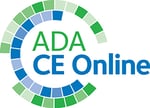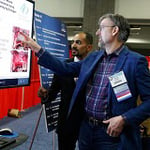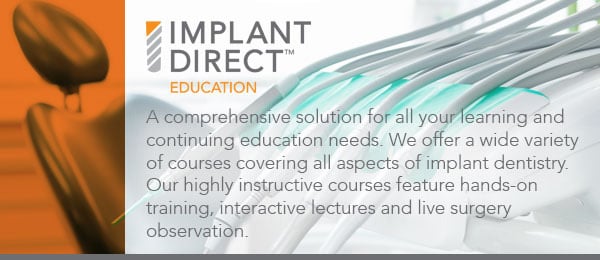The role of systemic medications on implant osseointegration
Proton pump inhibitors (PPI) and selective serotonin reuptake inhibitors (SSRI) are potential cofounding factors for increased risk of experiencing implant failure (IF). This finding is from a systematic review and meta-analysis published in a special issue of Clinical Oral Implants Research in October 2018.
Authors conducted a systematic review to examine the association between the intake of medications that could affect bone metabolism and implant outcomes. Electronic and manual searches of studies published through May 2017 included PubMed, MEDLINE (OVID), Embase (OVID), Cochrane Central Register of Controlled Trials, Cochrane Oral Health Group Trials Register, Web of Science, SciVerse, New York Academy of Medicine’s Grey Literature Report, and the register of clinical studies hosted by the National Institutes of Health. IF was the primary outcome, while biological or mechanical complications and causes or timing associated with IF were secondary outcomes. Authors used meta-analyses for the binary outcome of IF and odds ratios (OR) to measure the association between IF and medications.
Authors compiled the number of implants in experimental and control groups directly from the data but calculated the number of failures based on the reported failure rates. They used the inverse variance method to pool all studies and applied fixed and random weights to calculate 2 different estimates of the population OR. Heterogeneity was measured using I2 and P values for homogeneous studies comparing the P value to a 5% level of significance.
After an initial search that yielded 430 potential articles, authors chose 17 studies for review. Of these 17 studies, 5 focused on nonsteroidal anti-inflammatory drugs, 2 on SSRIs, 2 on PPIs, 7 on oral bisphosphonates, and 1 on antihypertensives (AHTN) medication. Of the studies, 12 were retrospective cohort studies, 3 were randomized controlled trials, 1 was a prospective cohort study, and 1 was a case-control study.
For PPIs, the authors’ fixed-effects and random-effects models estimated a difference of IF rates of 4.29% and 4.53%, respectively, showing significantly higher IF rates in the test group than in the control group (P < .01). For SSRIs, the models estimated a positive difference of 7.48% and 7.5%, respectively, showing significantly higher IF rates in the test group than in the control group (P < .01). For PPIs, both models estimated an OR of a failure in the experimental group against that of a failure in the control group of 2.02. For SSRIs, the fixed-effects model estimated an OR of IF in the experimental group against failure in the control group of 2.92. The random-effects model resulted in an OR of 3.00. Authors rejected homogeneity of the PPI and SSRI studies at the 5% level, finding a significant effect of the medication (P < .05).
Authors could not conduct meta-analysis for AHTN medications. Just 1 study met the inclusion criteria, and it showed an increased survival rate when taking AHTN medication. None of the other medications showed significance.
The authors urged caution “due to the lack of homogeneity with regard to the dosage and timing in-taking oral [bisphosphonates] reported in the studies, but apparently seems not to represent a contraindication for implant therapy in osteoporotic patients.”
Read the original article here or contact the ADA Library & Archives for assistance.
Dosage, duration of antiresorptive drugs play key roles in implant therapy
Patients who take low-dose antiresorptive drugs (ARDs) do not have a higher implant failure rate or experience greater implant-related complications than patients who do not take them. But patients with comorbidities and those who take high-dose ARDs or oral bisphosphonates (BP) over a long period should be considered at high risk of experiencing medication-related osteonecrosis of the jaws (MRONJ). The findings are from a systematic review and meta-analysis published in a special issue of Clinical Oral Implants Research in October 2018.
Authors studied data on patients who took ARDs and compared their effect on implant loss, grafting procedure failure, peri-implant marginal bone loss, MRONJ and peri-implantitis against patients who did not take ARDs. Their article search included MEDLINE (PubMed), Embase (Ovid), Cochrane Central Register of Controlled Trials (Ovid), reference lists of previous reviews, and the Science Citation Index of included articles through May 2017.
After an initial search yielding 4,093 studies, the authors chose 38 for review. They grouped these studies into 3 categories: studies on BP intake, studies on hormone replacement therapy (HRT), and studies on MRONJ associated with oral implants. All studies met predefined inclusion criteria: case series, cohort studies, case-control studies, controlled or randomized controlled clinical trials, retroactive or prospective design, and 10 or more patients with systemic intake of ARDs.
Authors defined implant loss as the primary outcome and grafting procedure failure, marginal bone loss, MRONJ, and peri-implantitis as secondary outcomes. They conducted random-effects meta-analyses separately for each ARD type to measure pooled estimates at the patient level, implant level, or both.
Authors included 24 studies on BP intake. Among these, the number of patients with implants ranged from 11 through roughly 800, while the number of implants ranged from 24 through 1,267. The number of patients without BP intake ranged from 12 through about 16,000, while the number of implants ranged from 28 through roughly 28,000. The studies reported an observation period that ranged from 0.3 through 16 years after implant placement or restoration.
Authors examined 7 studies that reported HRT intake. Of these, all but 1 were retrospectively based on medical and dental records. The number of patients with implants ranged from 13 through 161, while the number of implants for this group ranged from 24 through 61. The number of patients without HRT intake ranged from 51 through 304. The number of implants ranged from 379 through 661. The studies reported an observation period ranging from 0.3 through 20 years after implant placement or restoration. Authors reviewed 7 studies reporting on MRONJ association with implants. The number of patients ranged from 11 through 27, and the number of implants ranged from 8 through 61.
For BP intake, authors noted no significant differences in implant loss between the case and control groups. They also found that low-dose BP intake did not compromise peri-implant marginal bone levels. Studies on HRT intake showed higher implant loss rates in the case groups (9.1%-27.3%) compared with the control groups (7.4%-16.1%). One study found a relative risk of 2.55 for the case group compared with the control group. Another study reported larger amounts of peri-implant marginal bone loss in HRT patients compared with patients in the control group (25% and 15% of implant length, respectively).
Authors were able to associate MRONJ with BP intake in all but 1 study, which included 2 patients who also took denosumab. Authors noted the MRONJ lesion was located in the mandible in 84 patients, the maxilla in 34 patients, and more often in posterior areas of the jaws. Triggers for MRONJ included implant presence (41 patients), implant placement (15 patients), and removal of an implant or explantation (5 patients). The time frame between implant placement and onset of MRONJ ranged from 0 through 210 months, while the time frame between the first ARD intake and onset of MRONJ ranged from 1 through 233 months. Based on 6 studies reporting single-patient data, MRONJ in patients taking BP for osteoporosis was present in 70% of patients at least 36 months after BP intake. MRONJ appeared in 64% of patients with cancer at least 36 months after BP intake.
Read the original article here or contact the ADA Library & Archives for assistance.
Systemic drug delivery brings innovation to implant therapy
Authors conducted their research to measure how well implant surgery would succeed based on treatment with anabolic agents, anticatabolic agents, and dual anabolic and anticatabolic mechanism agents. They also examined how systemic postoperative drugs could influence titanium implant osseointegration.
The authors’ review of anabolic agents included parathyroid hormone peptides, simvastatin, prostaglandin EP4 receptor agonist, vitamin D, strontium ranelate (SR), and romosozumab. Authors cited research that found intermittent use of parathyroid hormone can boost cortical and trabecular bone mass and enhance new bone formation around implants. More research cited by authors found that prostaglandin EP4 receptor agonist stimulated production of receptor activator of nuclear factor-B ligand (RANKL), increasing bone mineral density and bone-implant attachment strength. The research also found that EP4 receptor agonist could increase early fixation of rough surface implants. Authors cited research that found that romosozumab can inhibit the ability of the glycoprotein sclerostin to suppress bone formation.
The authors’ review of anticatabolic agents included calcitonin, bisphosphonates, RANK/RANKL/osteoprotegerin (OPG) system, and SERM. Authors cited a 2011 study that found that calcitonin enhanced bone mass surrounding the implant and osseointegrated implant surface, with an inferior effect compared with orally administered alendronate.
The authors focused on 5 nitrogen-rich bisphosphonates associated with osseointegration of implants. They cited a 2015 comparative study that showed alendronate had a lower effect on bone-to-implant contact and reverse torque compared with orally administered raloxifene. They cited a 2005 study that found that ibandronate can reverse harmful effects of osteoporosis on osseointegration, while a separate 2005 study found that a higher, 1-time dose of ibandronate had the same effect on implant fixation as lower-dose daily injections. Authors cited a 2013 study that found that zoledronic acid has a better effect on bone-to-implant and peri-implant bone fraction compared with alendronate and SR. They cited a 2007 study that found that pamidronate prevents loosening in low-protein diet rats and a 2014 study that found no beneficial effects of systemic risendronate regarding acetabular component fixation and BMD in revision arthroplasty.
In examining the role of RANKL/RANK/OPG, authors cited a 2004 study that found that osteoprotegerin limits the ability of RANK and RANKL to bind, lowering osteoclastogenesis. They cited a 2011 study that found that OPG and immunoglobulin Fc offered significant protection against resorption and lower osteoclast density compared with alendronate, and a 2015 study that found increased pull-out force and bone density.
Authors cited several studies on the effects of SERM, including increased bone mass and strength, and improved osteoblast function and differentiation. They cited a 2015 study that found that orally administered raloxifene increased peri-implant bone mass in osteoporotic rats and restored reverse torque and bone-to-implant contact and improved osseointegration of implants compared with orally administered alendronate.
The authors’ examination of dual anabolic and anticatabolic mechanism agents included simvastatin and SR. Authors cited multiple studies that found that simvastatin suppressed osteoclast formation and osteoblast apoptosis through the transforming growth factor-beta receptor and increased bone density around the implant and bone-to-implant contact in intraperitoneal treated rats. For SR, authors cited a 2013 comparative study that showed the superior effect of zoledronic acid compared with similar effects of SR and alendronate groups.
The authors’ examination of postoperative drugs that influence titanium implant osseointegration included nonsteroidal anti-inflammatory drugs (NSAIDs) and opioids. Authors identified several studies that found harmful effects of NSAIDs on bone formation, including a 2012 review that found that continued used of NSAIDs is associated with a lower bone density around implants, bone area, and bone-to-implant contact. The effect of opioids on osseointegration, authors noted, have not yet been studied.
Authors’ examination of drugs to prevent postimplant surgery comorbidities included proton pump inhibitors (PPIs) and selective serotonin reuptake inhibitors (SSRIs). For PPIs, authors cited a 2016 study that found that omeprazole impairs osseointegration in rats, mostly due to a lower number of osteoclasts. For SSRIs, authors cited a 2014 study of 490 patients with 916 dental implants that associated SSRI treatment with increased failure risk due to mechanical loading.
“More attention should be given on the influence of postoperative drugs on osteointegration of titanium implants,” the authors concluded. “Comparative studies between drugs should be performed in order to be able to choose the one with least chances to jeopardize implant survival.”
Read the original article here or contact the ADA Library & Archives for assistance.
Older patients taking serotonin reuptake inhibitors at higher risk of experiencing oral implant failure
The use of selective serotonin reuptake inhibitors (SSRIs) should be considered into the prognosis treatment of older patients who may need dental therapy, according to research published in the December 2017 issue of Gerodontology. Authors based their finding on a broad-based literature review regarding the effects of SSRIs on bone metabolism and dental implant outcomes.
The authors noted that depression is a significant health concern in older populations, and that SSRIs are the most commonly prescribed antidepressants. They identified several studies that suggest increased dental implant failure associated with SSRI intake. In particular, authors cited a 2010 case-control study that found that SSRIs with higher 5-hydroxytryptamin binding affinity were associated with greater osteoporotic bone loss. They also cited a 2016 study that found a synergistic effect of insulin and SSRI on downregulation of bone turnover. Authors further noted that estrogen deficiency or diabetic status—often prevalent in older people—likely would worsen SSRI-associated bone health deterioration.
Authors pointed to a large retrospective cohort 2014 study that found that SSRI users experienced an implant failure rate that was 6% higher than that of nonusers. They also cited a 2017 retrospective study that found SSRI users experienced a 12.5% implant failure rate compared with a 3.3% failure rate in nonusers. They cautioned, however, that the type of SSRI drug, dosage, and host-related genetic and metabolic factors would be modulating factors. Authors also cautioned about the potential for SSRIs to increase the chances for bleeding and related postoperative complications.
“As older individuals comprise a high-risk group for both high oral rehabilitation and SSRI use, clinicians should be aware the potential association between SSRI and dental implant failures,” the authors concluded. “Well-designed investigations specific to geriatric cohorts are essential to understand the implications of SSRI use on dental implant prognosis.”
Read the original article here or contact the ADA Library & Archives for assistance.
Implantology CE courses
At Implant Direct, we offer a diverse and comprehensive list of implant-dentistry courses to meet all your learning and CE needs. Each class is designed to meet the specific needs of the modern implant marketplace. Featuring a variety of hands-on training sessions, interactive lectures and live surgery observation classes, our classes are taught by some of the most respected names in the field. From introductory courses that cover the basic surgical principles and protocols, hybrid and full arch restoration cases to advanced courses covering the latest technological innovations and the future of implantology, we’re here to help each clinician reach their full potential. For more information, visit our Education Center.
Osseointegration CE in San Francisco
Osseointegration is just one of the many specialty and discipline courses being offered Sept. 4-8 at ADA FDI 2019. Get the CE you want and need to support your personal and professional goals.
Courses to consider include:
- Full-Arch Implant Reconstruction: Treatment Planning (5107), CE Hours: 2.5
- Guided Surgery and Digital Workflow in Immediate Loading of Implants in Periodontal Compromised Dentition (5110), CE Hours: 2
- Implant and Prosthesis Delivery: A Live Patient Event (5137), CE Hours: 2.5
- Managing Technical Complications of Dental Implants (5121), CE Hours: 1
Register today at ADA.org/meeting.
ADA CE Online Courses  Need CE? ADA CE Online has hundreds of hours of CE that you can earn from the comfort of your own home. Too many to choose from? Take them all! Get unlimited access to the entire ADA CE online library, including JADA, for one year from purchase. Access anywhere, anytime. With new courses being added every month, you’ll never run out of education opportunities. Group subscriptions are also available, check it out now!
Need CE? ADA CE Online has hundreds of hours of CE that you can earn from the comfort of your own home. Too many to choose from? Take them all! Get unlimited access to the entire ADA CE online library, including JADA, for one year from purchase. Access anywhere, anytime. With new courses being added every month, you’ll never run out of education opportunities. Group subscriptions are also available, check it out now!
Academy of Osseointegration announces 2020 call for abstracts, student travel grants  The Academy of Osseointegration is now accepting abstracts for its 35th Annual Meeting to be held in Seattle, Washington, March 18-21, 2020. Dental researchers are invited to submit abstracts for Clinical Innovations, Oral Research (Scientific and Clinical), and Electronic Poster (Scientific, Clinical and Case Studies) presentations before 11:59 p.m. EST on October 4, 2019 online.
The Academy of Osseointegration is now accepting abstracts for its 35th Annual Meeting to be held in Seattle, Washington, March 18-21, 2020. Dental researchers are invited to submit abstracts for Clinical Innovations, Oral Research (Scientific and Clinical), and Electronic Poster (Scientific, Clinical and Case Studies) presentations before 11:59 p.m. EST on October 4, 2019 online.
There are no submission fees and no limit to the number of abstracts you can submit.
In addition, the Osseointegration Foundation will be awarding 20, $1,000 Student Travel Grants to recipients of the top scoring oral research and e-poster abstracts who are students currently enrolled in a dental school program. Only authors indicating their interest via the abstract submission site will be considered for these grants.
A very elite group of researchers will be honored for their outstanding contributions to the field of implant dentistry during AO’s Annual Meeting, which sees nearly 2,000 dental colleagues attend each year. Will you be one of them? Submit your abstracts today!

The consulting editor for JADA+ Scan — Osseointegration is Clark M. Stanford, DDS, PhD, Distinguished Professor and Dean, University of Illinois at Chicago College of Dentistry and President-elect, Academy of Osseointegration Board of Directors. |
|








